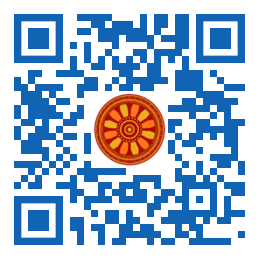
:: International Transaction Journal of Engineering, Management, & Applied Sciences & Technologies
http://TuEngr.com

ISSN 2228-9860
eISSN 1906-9642
CODEN: ITJEA8
FEATURE PEER-REVIEWED ARTICLE
Vol.12(3) (2021) |
Is the Micro-Finance Program a Panacea for Household Welfare? An Empirical Analysis from Pakistan
 Mudassar Hussain (Research Unit, Allama Iqbal Open University, Islamabad, PAKISTAN),
Mudassar Hussain (Research Unit, Allama Iqbal Open University, Islamabad, PAKISTAN),
Usman Shakoor (Department of Economics, COMSATS University Islamabad, PAKISTAN),
Muhammad Usman (Department of Management Sciences, Foundation University, Islamabad, PAKISTAN),
Mudassar Rashid, Muhammad Irfan (Department of Economics, COMSATS University Islamabad, PAKISTAN),
Muhammad Abeer Farooq (Sustainable Development Policy Institute, Islamabad, PAKISTAN).
Disciplinary: Welfare Economics & Econometrics, Poverty Alleviation and Welfare Studies, Social Engineering.
doi: 10.14456/ITJEMAST.2021.52
Keywords: BISP, NRSP, Microfinance programs (MFP), Household Welfare; Family member, micro-credit scheme; Bivariate probit regression; Welfare management; microloan.
AbstractThis study evaluated the impact of microfinance programs Benazir Income Support Programme (BISP) and National Rural Support Programme (NRSP) on the welfare of the household. Primary data was collected through a questionnaire from 130 microfinance beneficiaries of BISP and NRSP from Islamabad/Rawalpindi. Purposive Sampling Technique and Bivariate Probit Regression Model were used for empirical results. The results showed that if being a member of the microfinance program, household welfare had improved. Respondents experienced a rise in household income, household savings, enabled to pay medical bills and schooling expenditure, improved household consumption pattern, and after availing the microloan/cash grant. The improvement in welfare indicators depicts progression in the welfare of the beneficiary population that showed a trend of poverty reduction through these microfinance programs.Paper ID: 12A3J
Cite this article:
Hussain, M., Shakoor, U., Usman, M., Rashid, M., Irfan, M., Farooq M. A. (2021). Is the Micro-Finance Program a Panacea for Household Welfare? An Empirical Analysis from Pakistan. International Transaction Journal of Engineering, Management, & Applied Sciences & Technologies, 12(3), 12A3J, 1-10. http://doi.org/10.14456/ITJEMAST.2021.52
References
- ADB. (2007). Effect of Microfinance Operations on Poor Rural Households and the Status of Women. Asian Development Bank, Special Evaluation Study.
- Akram, M. and I. Hussain. (2011). The role of microfinance in uplifting income level: a study of District Okara, Pakistan. Journal of contemporary research in business, 2(11), 83-94.
- Bebczuk, R. and F. Haimovich. (2007). MDGs and Microcredit: An Empirical Evaluation for Latin American Countries. Working Paper No. 48. Argentina: Universidad Nacional de la Plata.
- Chaudhry. I. S. (2009). Poverty alleviation in southern Punjab (Pakistan): An empirical evidence from the project area of Asian Development Bank. International research journal of finance & economics, 23(5): pp. 23-32.
- Coleman, B. E. (1999). The Impact of Group Lending in Northeast Thailand. Journal of Development Economics 60, 105-141.
- Coleman, B. E. (2006). Microfinance in Northeast Thailand: Who benefits and how much?. World Development, 34(9), 1612-1638.
- Dichter, T. (2006). Hype and Hope: The Worrisome State of the Microcredit Movement. The Microfinance Gateway.
- GoP. (2014). Economic Survey of Pakistan 2013-2014. Economic Advisor's Wing, Ministry of Finance, Government of Pakistan, Islamabad, Pakistan.
- Greene, W. H. (2007). Econometric Analysis. 6th Ed., Pearson Prentice Hall, New York, pp. 817-819.
- Hulme, D. and P. Mosley. (1996). Finance against Poverty. vol.1 and 2, Routledge: London.
- Khan, S.N. and S.Qutub. (2010). The Benazir Income Support Programme and the Zakat Programme: A political economy analysis of gender. Strategic and economic policy research, pp. 1-48.
- Khandker, S. (1998). Fighting Poverty with Microcredit: Experience from Bangladesh. New York: Oxford University Press.
- Kochar, A. (1997). An empirical investigation of rationing constraints in rural credit markets in India. Journal of Development Economics, 53, 339-371.
- Li, R., Li, Q., Huang, S. and Zhu, X., (2013). The credit rationing of Chinese rural households and its welfare loss: An investigation based on panel data. China Economic Review, 26, pp.17-27.
- Maldonado, J. (2005). The Influence of Microfinance on the Education Decisions of Rural Households: Evidence from Bolivia. CEDE Document No.2005-46. Bogota, Columbia: Universidad de los Andes.
- Mamun, A.A., S. A. Wahab and C. A. Malarvizhi. (2010). Empirical Investigation on Repayment Performance of Amanah Ikhtiar Malaysia's Hardcore Poor Clients. International Journal of Business and Management, 6(7), 125-133.
- Morduch, J. (1999). Does Microfinance Really Help the Poor? New Evidence from Flagship Program in Bangladesh. Boston, MA: HIID and Hoover Institution.
- Pitt, M., S. Khandker, O. Chowdhury and D. Millimet. (2003). Credit Programs for the Poor and the Health Status of Children in Rural Bangladesh. International Economic Review, 44(1), 87-118.
- Pitt, M. and S. Khandker. (1998). The Impact of Group-Based Credit Programs on Poor Households in Bangladesh: Does the Gender of Participants Matter? Journal of Political Economy, 106, 958-96.
- Shirazi, N. S. and A. U. Khan. (2009). The role of Pakistan poverty alleviation fund's micro credit in poverty alleviation. Pak. Eco. soc. rev., 47(2), 215-228.
- Weiss, J. and H. Montgomery. (2005). Great Expectations: Micro Finance and Poverty Reduction in Asia. ADB Institute Research Paper Series No.63. Manila.
- Yusuf, M.B.O., Shirazi, N.S. and MatGhani, G. (2013). The impact of Pakistan poverty alleviation fund on poverty in Pakistan: An empirical analysis. Middle-East Journal of Scientific Research, 13(10), 1335-1344.
Other issues:
Vol.12(2)(2021)
Vol.12(1)(2021)
Vol.11(16)(2020)
Vol.11(15)(2020)
Vol.11(14)(2020)
Archives
Call-for-Papers
Call-for-Scientific PapersCall-for-Research Papers: ITJEMAST invites you to submit high quality papers for full peer-review and possible publication in areas pertaining engineering, science, management and technology, especially interdisciplinary/cross-disciplinary/multidisciplinary subjects.
To publish your work in the next available issue, your manuscripts together with copyright transfer document signed by all authors can be submitted via email to Editor @ TuEngr.com (no space between). (please see all detail from Instructions for Authors)
Publication and peer-reviewed process:
After the peer-review process (4-10 weeks), articles will be on-line published in the available next issue. However, the International Transaction Journal of Engineering, Management, & Applied Sciences & Technologies cannot guarantee the exact publication time as the process may take longer time, subject to peer-review approval and adjustment of the submitted articles.